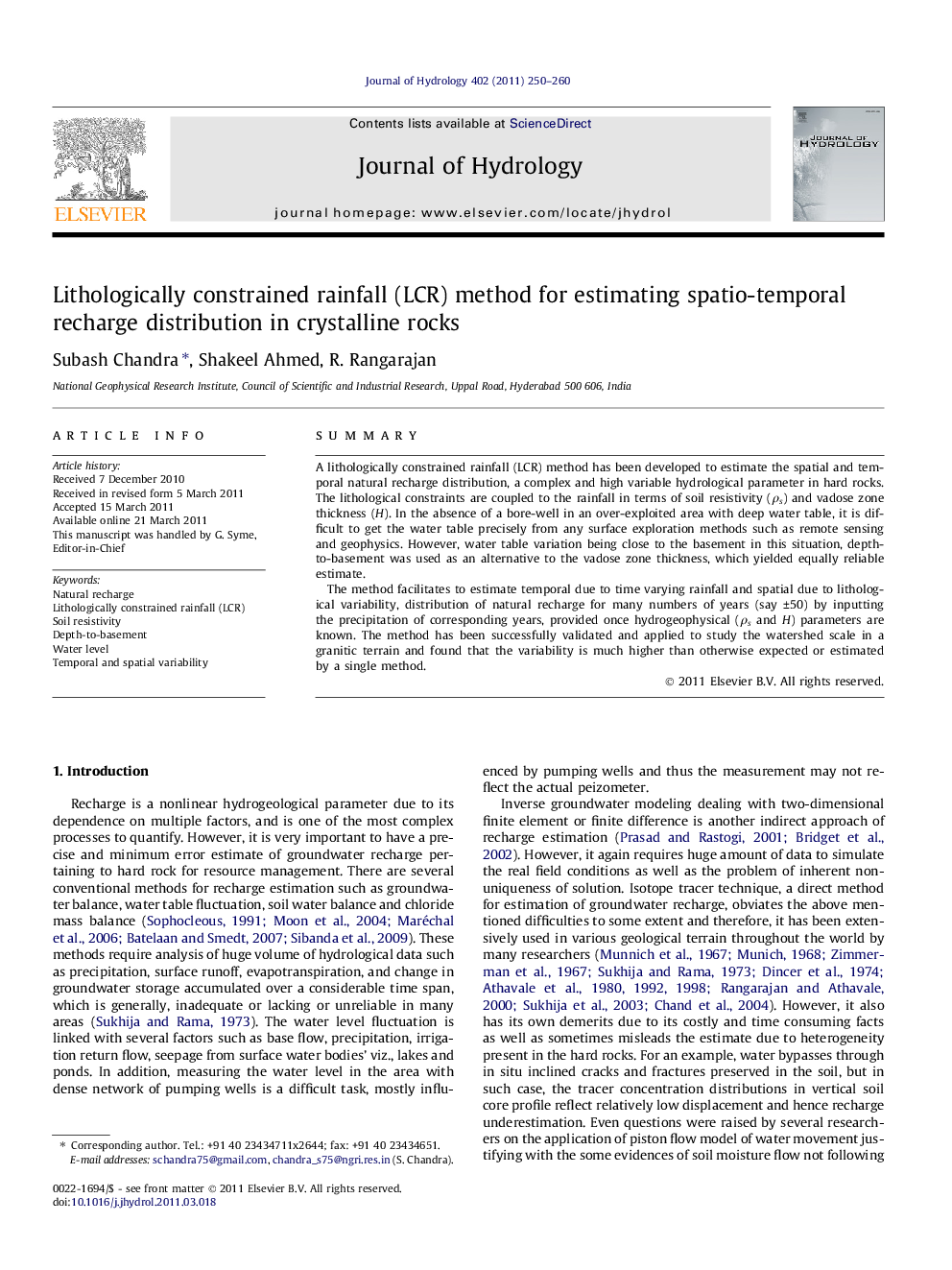| Article ID | Journal | Published Year | Pages | File Type |
|---|---|---|---|---|
| 4577526 | Journal of Hydrology | 2011 | 11 Pages |
SummaryA lithologically constrained rainfall (LCR) method has been developed to estimate the spatial and temporal natural recharge distribution, a complex and high variable hydrological parameter in hard rocks. The lithological constraints are coupled to the rainfall in terms of soil resistivity (ρs) and vadose zone thickness (H). In the absence of a bore-well in an over-exploited area with deep water table, it is difficult to get the water table precisely from any surface exploration methods such as remote sensing and geophysics. However, water table variation being close to the basement in this situation, depth-to-basement was used as an alternative to the vadose zone thickness, which yielded equally reliable estimate.The method facilitates to estimate temporal due to time varying rainfall and spatial due to lithological variability, distribution of natural recharge for many numbers of years (say ±50) by inputting the precipitation of corresponding years, provided once hydrogeophysical (ρs and H) parameters are known. The method has been successfully validated and applied to study the watershed scale in a granitic terrain and found that the variability is much higher than otherwise expected or estimated by a single method.
► We developed lithologically constrained rainfall method to estimate recharge. ► Soil resistivity and vadose zone thickness represents the lithological variability. ► This determines the spatio-temporal natural recharge distribution in hard rock terrain. ►LCR method is applicable at local as well as regional scale.
